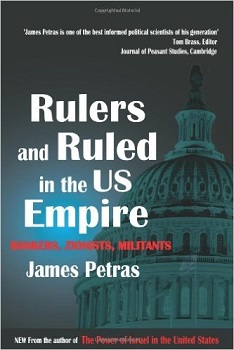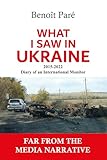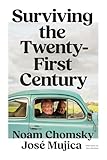Sociology professor emeritus James Petras surely ranks as one of the most astute scholars and chroniclers of capitalism and imperialism, as well as being a realistic appraiser of progressivist movements in the world. His latest book — Rulers & Ruled in the US Empire Bankers Zionists Militants (Clarity Press, 2007) — is a valuable compendium of how power is distributed and wielded in society and among states.
 Petras begins with the simple division — that between the rarified stratum of haves and the masses of have-nots. He notes that wealth is super concentrated among the haves, leaving crumbs of wealth to be distributed among the masses: the richest two percent of adults possess more than half the world’s wealth, the richest 10 percent own 85 percent of the wealth. CEOs are earning 430 times the wages of an average worker. Yet, much of society lionizes the wealthy, and people seldom hear why one human being should be worth so much more than another human being. Seldom does one come across someone questioning the morality of a billionaire living in reclusive opulence on a vast hectarage with a multi-roomed mansion staffed by plebian servants while somewhere unfortunate souls struggle keep warm and dry in cardboard boxes under a bridge.
Petras begins with the simple division — that between the rarified stratum of haves and the masses of have-nots. He notes that wealth is super concentrated among the haves, leaving crumbs of wealth to be distributed among the masses: the richest two percent of adults possess more than half the world’s wealth, the richest 10 percent own 85 percent of the wealth. CEOs are earning 430 times the wages of an average worker. Yet, much of society lionizes the wealthy, and people seldom hear why one human being should be worth so much more than another human being. Seldom does one come across someone questioning the morality of a billionaire living in reclusive opulence on a vast hectarage with a multi-roomed mansion staffed by plebian servants while somewhere unfortunate souls struggle keep warm and dry in cardboard boxes under a bridge.
Wealth is finite at any given moment in time; therefore, maldistribution of that wealth so that it accumulates in few hands removes food and shelter from masses of people. Petras writes, “Countries of ‘surging billionaires’ produces burgeoning poverty, submerging living standards. The making of millionaires means the unmasking of civil society …”
Petras details the interplay of capitalistic forces that exacerbate the wealth gap further. This is because society is structured to make workers into wage slaves for voracious corporations.
The heads of corporations wallow in wealth. And, as Petras illustrates, wealth is not only economic power but also political power.
The concentration of wealth and power is based on the increasing exploitation of the working classes. The system of rapid capital disbursement clashes with the severely impeded mobility of labor.
Immigrants are a too convenient scapegoat for the woes of the working class. Petras refutes the myth of “free benefits” received by immigrant workers noting that most such workers pay taxes. The professor describes how the criminalization of immigrant workers by the Democratic Party and Republican Party, in collusion with corporations, allows exploitation of this labor.
Exploiting labor is just one example of imperialistic forces at play. Petras writes, “Political corruption, not economic efficiency, is the driving force of economic empire-building.”
But there is a much darker side to imperialism: “a policy of ‘rule or ruin.’” The dark force driving imperialism, according to Petras, is genocide. Petras harkens to the World War genocides inflicted on Armenians, Jews, Soviets, and others to the genocide pursued against Iraqis today.
Petras describes a historical antipathy of some Jews to Palestinians which drives the genocide in historical Palestine. He does not shirk from denouncing Zionism and its ideological adherents who dispose of allies like “used condoms.” Zionism gives rise to a two-tiered state featuring Jews-only bomb shelters.
Petras spotlights the powerful Jewish Lobby and its massive sway in the US government. He criticizes the antiwar movement for its blind eye to the lobby. Writes Petras, “[R]eal peace in the Middle East can only come about with the closing of foreign military bases, the ending of Israel’s colonial occupation, and public control or nationalization of energy sources.”
So powerful is the lobby in the US that Petras states that Zionists are able to steer about 98 percent of the US Congress on legislation favorable to Israel, even when prejudicial to the interests of US Big Oil. he quotes the executive director of the American Jewish Committee, David A. Harris: “[T]here can be no doubt that American Jewry is an essential element of the equation [yoking the US to Israel].” [italics added by Petras]
Petras also examines the up and coming superpower China whose rapid growth has been on the back of exploited labor. He finds that China’s growth has been over-rated. He is curious about the growth performance of Chinese versus non-Chinese owners in the economy, which would give an indication of imperialistic inroads to the Chinese economy.
Petras also finds that gauging the standard of living by monetary income alone is too simplistic: “Per capita income obscures the elephantine inequalities between the top five percent and the bottom 75 percent of the population.”
In China’s case, the increase in income and reduction in poverty needs to be considered in light of the end of free education and health care, the displacement of farmers, artisans and others, the increase in living costs, the worsening working conditions, and the increased tax burdens on peasants.
Corruption is endemic in China. Petras notes that the corruption under capitalism far outstrips that under the Communist phase in China. In fact, the tables have turned such that: “The ‘victims of the Cultural Revolution’ became the executioners of one of the harshest capitalist restorations in modern history…” The turn to the Right is clear in China.
Elsewhere, while many progressives are cheering the emergence of the Left in Central and South Ixachilan (America), Petras argues against this false optimism and focuses on the deeds rather that the leftist rhetoric of the so-called leftist regimes.
According to Petras, Brazil’s president Luiz Inácio Lula da Silva has betrayed his workers’ base and is clearly following neoliberal directives. President Néstor Kirchner in Argentina has followed a more centrist position but has not repudiated neoliberalism. Petras is scathing in exposing Bolivian president Evo Morales whose obscure words mask his subservience to multinational corporations that seek to exploit the natural resources of his country. Venezuela’s president Hugo Chávez and Cuba’s leader Fidel Castro hold closer to socialism, but even they could follow a path that is truer to the aspirations of people for equality and a control over their fates:
The essence of the matter is that Chavez’s rhetoric and discourse on 21st century socialism does not now or in the proximate future correspond to the political realities…
Leftist radicals exaggerate the radicalism or revolutionary reality of Cuba and Venezuela…
The attempt to redefine the conversion of the ex-leftist-turned-pragmatic neo-liberals into something progressive as a ‘counterweight’ to US power is disingenuous at best and at worst compounds the initial error…
The only consistent and consequential allies and forces for change are found among the radical left.
Petras sees a need to follow a different path. He is highly dubious about the actual benefits of foreign investment. In “Latin America” he finds the countries are “pay[ing] to be exploited.”
Petras does not confine himself to analysis and criticism; he provides alternative economic solutions, among them are nationalization and renationalization, countering the threat of investment and capital outflows, countering blocks to new financing, eradicating corruption, and providing alternatives to foreign investment.
Petras leaves the “radical” readers with hope, noting that the machinery of imperialism is facing enormous resistance in Afghanistan and Iraq, stalling sequential plans for conquest throughout the Middle East and abroad. Resistance movements in Palestine, Afghanistan, Iraq, and Somalia have taken the heat off regimes in Central and South Ixachilan. These resistance movements give heart to defeating empire.
Petras’s Rulers and the Ruled in the U.S. Empire belongs on the shelf of anyone who seeks an unsweetened understanding of power in play and what is needed to revolutionize the world, making it a better place for the masses.










